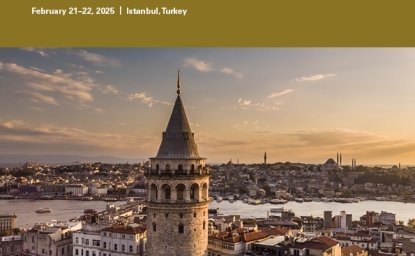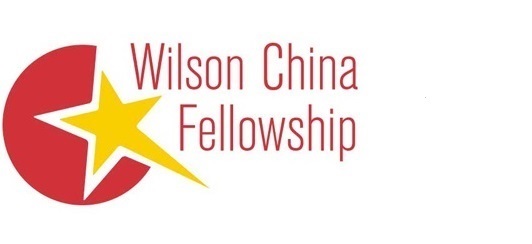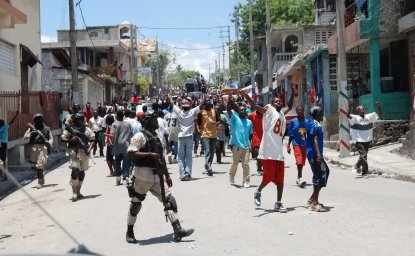Kennan Cable No. 81: What's at Stake in Nagorno-Karabakh: US Interests and the Risk of Ethnic Cleansing

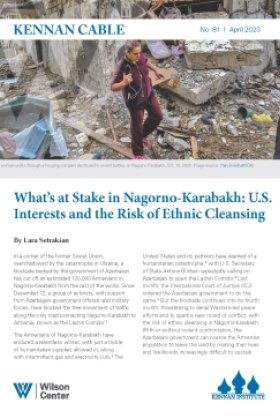
In a corner of the former Soviet Union, overshadowed by the catastrophe in Ukraine, a blockade backed by the government of Azerbaijan has cut off an estimated 120,000 Armenians in Nagorno-Karabakh from the rest of the world. Since December 12, a group of activists, with support from Azerbaijani government officials and military forces, have blocked the free movement of traffic along the only road connecting Nagorno-Karabakh to Armenia, known as the Lachin Corridor.[1]
The Armenians of Nagorno-Karabakh have endured a relentless winter, with just a trickle of humanitarian supplies allowed in, along with intermittent gas and electricity cuts.[2] The United States and its partners have warned of a humanitarian catastrophe,[3] with US Secretary of State Antony Blinken repeatedly calling on Azerbaijan to open the Lachin Corridor.[4] Last month, the International Court of Justice (ICJ) ordered the Azerbaijani government to do the same.[5] But the blockade continues into its fourth month, threatening to derail Western-led peace efforts and to spark a new round of conflict, with the risk of ethnic cleansing in Nagorno-Karabakh. With or without violent confrontation, the Azerbaijani government can coerce the Armenian population to leave the land by making their lives and livelihoods increasingly difficult to sustain.
The issue is more than a regional territorial squabble; it has become part of a larger contest, with notable US interests at stake. For the past three decades, Russia’s hard power presence in the South Caucasus and its influence over former Soviet republics provided Moscow with enough leverage to maintain peace between Armenia and Azerbaijan. Now Russia’s influence is receding, and its weakened capacity has been laid bare. The US has its first opportunity since the fall of the Soviet Union to gain significant standing in the South Caucasus, by rewriting the security architecture of the region.
At the 2023 Munich Security Conference in February, Blinken addressed the Nagorno-Karabakh issue. Sitting at a table with Armenian and Azerbaijani leaders on each side, he stated America’s commitment to the peace process, along with European partners. The surge of Western diplomatic engagement began after the Ukraine conflict and saw a major uptick after Azerbaijani attacks on Armenia proper in September 2022.
Azerbaijan’s blockade of the Lachin Corridor is a pivotal moment in the conflict between Armenians and Azerbaijanis over the future of Nagorno-Karabakh. The two have been in tension since the late years of the Soviet Union, though the seeds of the conflict were planted long before that. In the 1920s, Josef Stalin, then the Commissar of Nationalities for the USSR, placed the Armenian-majority region of Nagorno-Karabakh within the boundaries of Soviet Azerbaijan,[6] but granted Armenians of the region a high degree of cultural autonomy and self-rule. The resulting creation of the Nagorno-Karabakh Autonomous Oblast in 1923 was a move designed to create conflict, keeping Armenians and Azerbaijanis in a state of perceived vulnerability that would require Moscow to regularly intervene.[7]
That strategy succeeded. Beginning in the 1960s, after complaints of cultural repression and demographic policies designed to dilute their presence, the Armenians of Nagorno-Karabakh began to petition Soviet authorities for reassignment to the Armenian SSR. Emboldened by the reforms of glasnost and perestroika, Armenians held a referendum in 1991, with a vast majority of the population voting for Nagorno-Karabakh’s independence.[8] But the poll was rejected by Baku as illegal and the disagreement sparked pogroms against the Armenians of Azerbaijan and interethnic violence, culminating in the First Nagorno-Karabakh War. The conflict killed roughly 30,000 people between 1991–94 and pushed hundreds of thousands of people from their homes. Azerbaijanis were forced to leave lands captured by Armenians and Armenians fled from Baku and other parts of Azerbaijan.[9]
In Nagorno-Karabakh, local Armenians prevailed over Azerbaijani forces. For nearly 30 years, they built a self-proclaimed independent republic with democratic elections, a free press, and a range of public institutions. Officially, it remained within the territorial boundaries of Azerbaijan, unrecognized by any foreign country, though international mediators made reference to the right of self-determination for local Armenians as part of ongoing peace talks.
The government of Azerbaijan has long wanted to bring Nagorno-Karabakh under the federal control of Baku; the land controlled by Armenians before the 2020 war constituted 20 percent of Azerbaijan’s officially recognized territory. In September 2020, leveraging its superior military resources and direct support from Turkey, Azerbaijan launched an offensive to retake Nagorno-Karabakh and made significant territorial gains. After 44 days of war, a cease-fire brokered by Moscow, known as the trilateral agreement, was signed by Armenia, Azerbaijan, and Russia in November 2020.[10] The agreement guaranteed free passage of people and goods through the Lachin Corridor.
Baku’s stated goal is the full reintegration of Nagorno-Karabakh into Azerbaijan, by force if necessary. Under its proposal, Armenian residents would be treated as Azerbaijani citizens, with no special cultural or administrative status and rights. Armenians want to continue the internationally led negotiations that have long included notions of special status and civilian protection. The history of violence against Armenians in Azerbaijan, including the recent execution of Armenian prisoners of war and the sexual mutilation of female soldiers, give Armenians in Nagorno-Karabakh little confidence in their safety. Internationally led confidence-building measures would need significant time to generate the conditions for interethnic peace.
Also at issue is Baku’s treatment of ethnic and religious minorities already living under its control; while Azerbaijan runs showpiece initiatives on interfaith relations for an international audience, it has received the lowest possible rating from Freedom House for the treatment of women and ethnic minorities at home.[11] According to Freedom House, Azerbaijan’s government “has worked to stifle public expressions of Talysh and Lezgin identity, among other targeted groups.”[12] The Armenians of Nagorno-Karabakh are not interested in following the same fate.
For most of the past 30 years the US, France, and Russia worked as partners to help solve the Nagorno-Karabakh conflict, serving as co-chairs of the Organization for Security and Co-operation in Europe (OSCE) Minsk Group.[13] It was a project that captured the geopolitical zeitgeist of the 1990s: the new Russia working with leading countries of the West to solve problems in the former Soviet states. Moscow played the hard-power role in policing the South Caucasus, while the US and France worked in concert with Russia on advancing diplomatic paths to peace.
Today, the mechanism for that cooperation still exists, but collaborative leadership is hard to imagine, given the bitter divide between Russia and the West over Ukraine. Moreover, Russia’s hard-power depletion, along with its economic dependence on Turkey and Azerbaijan, has left it unable or unwilling to enforce the peace when Baku changes facts on the ground through military might. That has left the conflict between Armenia and Azerbaijan at constant risk of escalation.
The US and Russia could yet find a way to collaborate on peace in the South Caucasus, where their interests at least partially converge. But for the moment, the momentum is with the West to drive this conflict resolution forward. The US has outsourced the facilitation of Armenia-Azerbaijan peace talks to Brussels and despite some periodic interruptions, European Council President Charles Michel has led a visible and viable alternative to the negotiation track previously led by Moscow. The main deficiency of the arrangement is that the European Union (EU) has a hard time deterring military escalation or applying pressure to end the Lachin Corridor blockade. Economic sanctions are an unappealing option for Europe,[14] since the EU is hoping to double natural gas imports from Azerbaijan by 2027.[15]
It falls on the US to use diplomatic and economic tools to chasten either party when it takes destabilizing action. Intervention from Washington was crucial to de-escalating flare-ups between Armenia and Azerbaijan over the past year, according to diplomats in Yerevan.[16] Most notably, in September 2022, after an Azerbaijani invasion of sovereign Armenian territory through a ground incursion and a series of airstrikes, Blinken held calls with Baku and Yerevan that are credited with ratcheting down tensions and getting peace talks back on track.[17] Washington also played a key bridging role in getting the EU to send a civilian monitoring mission along the Armenian-Azerbaijani border at the request of Yerevan.[18] These were consequential interventions that signaled a more effective Western role in regional peacebuilding.
If Washington levels up its diplomatic engagement, it will add substantial and constructive heft to stabilization efforts in the South Caucasus. The US has enormous influence on Turkey; as Azerbaijan’s closest ally, Turkey has provided crucial assistance to Baku in its military operations around Nagorno-Karabakh.[19] The US has the means to deter both Turkey and Azerbaijan from escalating military operations against Armenia, using the threat of targeted sanctions and scaled-back military assistance. In early February, Armenia made concrete overtures for peace, sending aid to Turkey after its devastating earthquake, dispatching its foreign minister to meet his counterpart in Ankara,[20] and delivering a peace proposal for comprehensive peace to Baku.[21] None of these are guarantees of a stable settlement. But they create a momentum that the US should help advance, by discouraging Azerbaijan from using force as a negotiating tactic.
One of the Biden administration’s sharpest diplomatic tools is Section 907 of the Freedom Support Act, which ties US military assistance to Azerbaijan to the condition that it “not undermine or hamper ongoing efforts to negotiate a peaceful settlement between Armenia and Azerbaijan or be used for offensive purposes against Armenia.”[22] In January 2022, a report by the Government Accountability Office found that the US State Department needed to tighten reporting and accountability on whether Azerbaijan was meeting those conditions.[23] Eight months later, Azerbaijan launched its multi-pronged attack on Armenia proper. The goal of measures like Section 907 is not to punish Azerbaijan or hamper its relations with the US, but to raise the cost of military escalation and deter Azerbaijan from solving the issue of Nagorno-Karabakh by force.
If Azerbaijan continues to ignore the ICJ order to end the blockade, the US, as a permanent member of the UN Security Council, should push for a resolution calling for the same. This would reaffirm Baku’s need to stick to a rule- and diplomatic-based approach to the negotiations and to its commitments under the trilateral agreement, while reiterating the need for a long-term solution to civilian protection in Nagorno-Karabakh. It would help move the conflict further into the international sphere—away from overdependence on Russia—and enable the cooperation of multiple countries, with the attendant United Nations mechanisms to support peacebuilding efforts. Affirming the need for a long-term, peaceful settlement to the Nagorno-Karabakh conflict, in line with existing commitments, would force members of the Security Council to go on the record.
Even a Russian veto of a resolution would be a geopolitically useful outcome; if Moscow cannot agree to collaborate with other countries to promote peace, then it undermines itself as a constructive player in the South Caucasus. The formula of Russian troops as the sole peacekeeping force on the ground has proven insufficient.[24] Russia’s refusal to back a Security Council resolution would underscore the need for international peacekeepers in Nagorno-Karabakh, a solution that the EU Parliament called for in a resolution in January 2023.
Left alone, the status quo around Nagorno-Karabakh is a dangerous one. It undermines international institutions, including the ICJ, the highest court of the UN, which ordered Azerbaijan to take all measures at its disposal to ensure unimpeded movement in and out of Nagorno-Karabakh. It sets a dangerous precedent for future conflicts, setting in motion a coercive negotiation tactic that resembles humanitarian blackmail: the local population must accept the terms or face increasingly difficult conditions through limits on food, fuel, and basic supplies. Whatever the pretext for the blockade—Azerbaijan says that the Lachin Corridor has been used to transport weapons and raw materials from local mining operations—those claims can be raised through international courts or arbitration. The illegal use of a blockade as a unilateral response crosses an uncomfortable line for the field of humanitarian law.
The blockade is undermining confidence in a long-term agreement and erodes faith in Baku as a genuine partner for peace. Moreover, President Ilham Aliyev has made escalating and inflammatory comments, laying claim to parts of modern-day Armenia by calling them “Western Azerbaijan.” He has publicly vowed to pursue some of these claims by force, if they are not granted willingly.[25] None of these policies or rhetorical flourishes contribute to a climate of regional stability nor are they in the interest of the US.
As it stands, Nagorno-Karabakh Armenians are facing acute distress; with a scarcity of fresh food, medical supplies, and uncertain access to fuel and energy,[26] the blockade is a message to residents that they may as well leave. Should this continue indefinitely, or if Armenians are forcibly reintegrated into Azerbaijan without guarantees of safety and preservation of their culture, there could be a mass exodus. In that case, the blockade would essentially succeed, ending the indigenous presence of Armenians in Nagorno-Karabakh.
The resulting trauma and the humanitarian fallout could push Armenia to a dangerous geopolitical point. It would undermine the leadership in Armenia and cause almost certain political and social turbulence in a country that has been an exemplar of post-Soviet democratic transition. The peaceful Velvet Revolution of 2018 ousted Armenia’s kleptocratic leaders in a pro-democratic reset of national politics.[27] It brought in an administration under Prime Minister Nikol Pashinyan that has taken unprecedented steps toward Washington and other Western capitals.[28]
With Armenia’s democratic turn and Russia’s failure to meet its security obligations, relations between the two countries have fallen to a historical low. Public opinion in Armenia has shown unprecedented levels of criticism of Moscow’s policies in the region.[29] Russia’s inability to maintain regional peace, keep open the Lachin Corridor, and defend Armenia’s borders according to its obligations through the Collective Security Treaty Organization (CSTO) and bilateral agreements have left Armenians feeling betrayed.[30] In response, Armenia has delivered several embarrassing rebukes to Moscow.[31] It has downgraded its participation in CSTO with a series of steps, including canceling military drills planned in Armenia for 2023 and declining an offer from CSTO to deploy military observers along the Armenian border with Azerbaijan;[32] it opted for an EU civilian observer mission instead.[33]
If Washington’s goal is to reduce Russian influence in the South Caucasus, it will have to offer an alternative peace and security architecture for the South Caucasus. It must begin with ending the blockade of the Lachin Corridor. Should the blockade succeed in provoking ethnic Armenians to leave Nagorno-Karabakh it could produce a degree of desperation and insecurity that forces Armenia back into alignment with Russia, and possibly Iran. John Heffern, former US ambassador to Armenia, says that the gains of the 2020 Nagorno-Karabakh War “whetted Azerbaijan’s appetite” towards encroachment into Southern Armenia, in ways that threaten regional stability.[34]
An exodus of Armenians from Nagorno-Karabakh would leave the southern regions of Armenia extremely vulnerable to Azerbaijani military incursion. It would put Moscow back in a dominant position by default, based on the desperate need for even the minimal hard-power intervention that it could provide. It would also advance Iranian positions and power projections in the South Caucasus. Both Iran and Russia would pose as protectors of the Armenian population while securing their footprint along the strategic Iranian-Armenian-Azerbaijani border. In the case of another Azerbaijani incursion, which multiple Western diplomats in Yerevan say is likely to happen, the potential involvement of Russian, Iranian, and Turkish troops, alongside unpredictable refugee flows, would create a destabilizing set of conditions that no single party would be able to reign in. The cost of deterrence today is far less than the trouble of dealing with that messy outcome later.
It would represent a jarring failure for the US—and for the entire rule-based international community—if it effectively prevents ethnic cleansing in Ukraine at the hands of Russia, only to see it take place against Armenians by Azerbaijan. Advancing peace in the South Caucasus is a task that the US can and should take on, with seriousness and determination. Washington already has the diplomatic infrastructure and leverage in the region to advance a lasting negotiated settlement at a relatively low cost, with significant gains in strategic influence.
Moscow, keen to flex what muscles it has left, may attempt to hamper or scuttle a Western-led solution. But even with the risk of Russian spoilers, Western diplomacy can make substantial progress, reducing the risk of a violent escalation and moving down the narrow, but real path toward a breakthrough between the two parties. The bulk of what needs to happen next for regional peace rests on the policies of Baku and Yerevan. Their decisions can be influenced by wise diplomacy from Washington and a commitment by Western leaders to use all available tools to de-escalate conflict in the South Caucasus.
[1]. “US Urges Azerbaijan to Reopen Lachin Corridor with Armenia,” RadioFreeEurope/RadioLiberty, January 23, 2023, https://www.rferl.org/a/azerbaijan-armenia-blinken-lachin-blockade/32236178.html
[2] Ani Avetisyan, “Nagorno-Karabakh Enters Third Month of Blockade,” OC Media, February 14, 2023, https://oc-media.org/nagorno-karabakh-enters-third-month-of-blockade/
[3] Samantha Power, Twitter post (“The Lachin Corridor must be re-opened immediately—the closure has the potential to cause a significant humanitarian crisis. This corridor is an essential route for the flow of much needed food and medical supplies that must be allowed to flow freely.”), December 15, 2022, 3:34 p.m., https://twitter.com/PowerUSAID/status/1603488582840246296?s=20 tweet, Twitter.
[4] US Department of State, “Secretary Blinken's Call with Azerbaijani President Aliyev,” office of the spokesperson readout, January 23, 2023, https://www.state.gov/secretary-blinkens-call-with-azerbaijani-president-aliyev-10/
[5] Ewelina U. Ochab, “International Court of Justice Orders Azerbaijan to End Nagorno-Karabakh Roadblock,” Forbes, February 25, 2023, https://www.forbes.com/sites/ewelinaochab/2023/02/25/international-court-of-justice-orders-azerbaijan-to-end-nagorno-karabakh-roadblock/?sh=72b15fc86fa5
[6] Erin Blakemore, “How the Nagorno-Karabakh Conflict Has Been Shaped by Past Empires,” National Geographic, October 15, 2020, https://www.nationalgeographic.com/history/article/how-nagorno-karabakh-conflict-shaped-by-past-empires
[7] Center for Preventive Action, “Nagorno-Karabakh Conflict,” Council on Foreign Relations (website), January 6, 2023, https://www.cfr.org/global-conflict-tracker/conflict/nagorno-karabakh-conflict
[8] University of Central Arkansas, Political Science (website), “Azerbaijan/Nagorno-Karabakh (1991–Present),” https://uca.edu/politicalscience/dadm-project/europerussiacentral-asia-region/azerbaijannagorno-karabakh-1991-present/
[9] “Factbox: Nagorno-Karabakh—Disputed by Azerbaijan, Armenia,” Reuters, October 5, 2012, https://www.reuters.com/article/us-azerbaijan-armenia-conflict-karabakh-idUSBRE89419E20121005
[10] Orla Guerin and Yuri Vendik, “Armenia, Azerbaijan and Russia Sign Nagorno-Karabakh Peace Deal,” BBC News, November 10, 2020, https://www.bbc.com/news/world-europe-54882564
[11] Freedom House, “Azerbaijan: Freedom in the World 2022 Country Report,” https://freedomhouse.org/country/azerbaijan/freedom-world/2022
[12] “Azerbaijan: Freedom in the World 2022 Country Report,” 7.
[13] OSCE (website), “OSCE Minsk Group,” https://www.osce.org/mg
[14] “EU 'Not Considering' Sanctions against Baku over Karabakh Blockade,” "Ազատ Եվրոպա/Ազատություն" ռադիոկայան. Ազատություն ռ/կ, February 1, 2023, https://www.azatutyun.am/a/32250784.html
[15] Euronews (website), “EU Agrees Deal with Azerbaijan to Double Gas Exports by 2027,” July 19, 2022, https://www.euronews.com/my-europe/2022/07/18/von-der-leyen-heads-to-azerbaijan-to-secure-new-gas-importdeal#:~:text=The%20European%20Commission%20signed%20a,of%20natural%20gas%20by%202027
[16] “Upholding the Ceasefire between Azerbaijan and Armenia,” International Crisis Group, September 28, 2022, https://www.crisisgroup.org/europe-central-asia/caucasus/armenia-azerbaijan-nagorno-karabakh-conflict/upholding-ceasefire
[17] “Upholding the Ceasefire between Azerbaijan and Armenia.”
[18] Armenian Government Officials, In-Person, Interview with Author, February 13, 2023.
[19] Patrick Keddie, “What's Turkey's Role in the Nagorno-Karabakh Conflict?” Al Jazeera, October 30, 2020, https://www.aljazeera.com/features/2020/10/30/whats-turkeys-role-in-the-nagorno-karabakh-conflict
[20] “Türkiye Hails Armenia's 'Friendly Gesture' after Earthquake,” Daily Sabah, February 15, 2023, https://www.dailysabah.com/politics/diplomacy/turkiye-hails-armenias-friendly-gesture-after-earthquake
[21] “Armenia Offers Peace Treaty Project to Azerbaijan,” Al Jazeera, February 16, 2023, https://www.aljazeera.com/news/2023/2/16/armenia-offers-peace-treaty-project-to-azerbaijan
[22] Foreign Assistance: Agencies Should Take Steps to Improve Reporting on Assistance to the Government of Azerbaijan (Washington, DC: US Government Accountability Office, March 2, 2022), 6, https://www.gao.gov/assets/gao-22-104619.pdf
[23] Foreign Assistance, 18-20.
[24] Ani Avetisyan, “EU Parliament Calls for OSCE Peacekeepers in Nagorno-Karabakh,” OC Media, January 20, 2023, https://oc-media.org/eu-parliament-calls-for-osce-peacekeepers-in-nagorno-karabakh/
[25] Aza Babayan, “Aliyev Insists on Major Concessions by Armenia,” “Ազատ Եվրոպա/Ազատություն” ռադիոկայան. Ազատություն ռ/կ, September 16, 2022, https://www.azatutyun.am/a/32037585.html
[26] Tamara Qiblawi, “'Potatoes Are a Luxury': Vital Supplies Dwindle as 'Eco-Activists' Blockade a Breakaway Region Guarded by Russia,” CNN, January 12, 2023, https://www.cnn.com/2023/01/12/europe/armenia-azerbaijan-nagorno-karabakh-lachin-intl/index.html
[27] A. O., “How Armenia's Revolution Has Been Different,” The Economist, May 25, 2018, https://www.economist.com/the-economist-explains/2018/05/25/how-armenias-revolution-has-been-different
[28] Н. Гегелашвили, “Армения и США: новый этап сотрудничества.” Россия и новые государства Евразии, no. II (ХLIII) (2019): 127–140, https://doi.org/10.20542/2073-4786-2019-2-127-140
[29] Nadia Beard, “With Russia Bogged Down in Ukraine, Armenia Is Worried It's Being Abandoned by the Kremlin,” Radio Free Europe/Radio Liberty, September 30, 2022, https://www.rferl.org/a/armenia-russia-nagorno-karabakh-kremlin-support/32059243.html
[30] Beard, “With Russia Bogged Down in Ukraine, Armenia Is Worried,” 5-6.
[31] “Armenia Cancels Military Drills of Russian-Led Alliance,” Al Jazeera, January 10, 2023, https://www.aljazeera.com/news/2023/1/10/armenia-cancels-russian-led-military-drills-amid-conflict
[32] Ruzanna Stepanian, “Pashinian Again Chides Russian-Led Alliance.” “Ազատ Եվրոպա/Ազատություն” ռադիոկայան. Ազատություն ռ/կ, February 8, 2023, https://www.azatutyun.am/a/32262380.html
[33] Averting a New War between Armenia and Azerbaijan, Europe Report 266 (Brussels, Belgium: International Crisis Group, January 30, 2023), https://www.crisisgroup.org/europe-central-asia/caucasus/nagorno-karabakh-conflict/266-averting-new-war-between-armenia-and-azerbaijan
[34] John Heffern (former US Ambassador to Armenia), Zoom, Interview with Author, February 3, 2023.
Author


Kennan Institute
After more than 50 years as a vital part of the Wilson Center legacy, the Kennan Institute has become an independent think tank. You can find the current website for the Kennan Institute at kennaninstitute.org. Please look for future announcements about partnership activities between the Wilson Center and the Kennan Institute at Wilson Center Press Room. The Kennan Institute is the premier US center for advanced research on Eurasia and the oldest and largest regional program at the Woodrow Wilson International Center for Scholars. The Kennan Institute is committed to improving American understanding of Russia, Ukraine, Central Asia, the South Caucasus, and the surrounding region through research and exchange. Read more

Explore More
Browse Insights & Analysis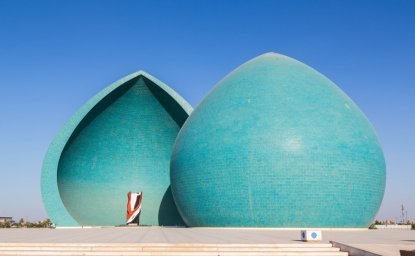
Iraq Should Consider Extending UNAMI’s Mission
